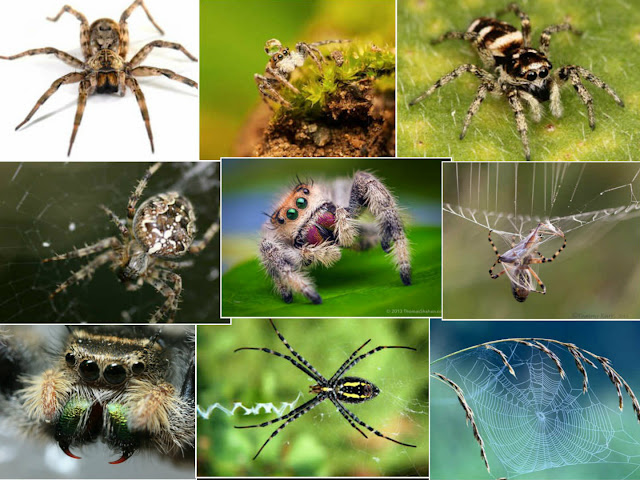Spiders are amazing creatures, and have appeared in many stories and movies. You may find someone you love very much, and there are those who hate them, and there are those who are afraid. But regardless of your position, you will find the following facts about spiders.
Spiders are made up of only two parts
All spiders of all types and types share this feature. Their bodies consist of only two parts: abdominal, cephalothorax, abdomen, and chest. Its small eyes, feet and teeth are all present in the front of the body called cephalothorax. The spindles that produce silk are located in the back of the body, called the abdomen. The two parts connect to each other through a narrow and large part known as the pedicel, A young man.
Except for one family, all spiders are poisonous
The spiders use poison primarily to subdue and crush their prey. The spider's venomous glands are located next to the fangs in the mouth area and are connected by small channels to transport venom. When the spider bites its prey, the muscles around the toxic glands contract and the poison moves to the fangs and into the prey. The poison acts to paralyze the prey. All types of spiders follow this method to live with the exception of one family only Uloboridae, which does not have the types of glands of poison from the ground.
All spiders are predatory
Spiders are all predatory animals, and their means to survive is to hunt their prey from other non-vertebrate animals and insects. This is the case for the majority of them, but there are exceptions to large sizes, as they may hunt and feed on large animals such as birds. Spiders belonging to the rank of Araneae include the largest group of carnivores on earth.
Spiders can not digest solid foods
Before spiders can eat their prey, they must first turn them into a liquid state. Spiders release digestive enzymes from their stomachs on their prey. Once the enzymes have begun to break and shred the prey tissue, the spiders deliberately pour the resulting fluids and suck them along with the enzymes they produced beforehand. Intestine where nutrients are absorbed and distributed to the body.
All spiders can produce silk
All kinds of spiders without exception are able to produce silk, not only that, but it remains with them throughout their different stages of life. Silk spiders are used for different purposes, such as catching their prey and protecting their young ones. They also use it to facilitate their movement and build shelter for them. Some species may even use them for reproduction, as we shall see shortly.
Not all spiders spit spider webs
Spiders are closely related to the nets that make them a haven for their prey, but there are some species of spiders that do not make any nets at all. The wolf spider, for example, waits surreptitiously and then retracts its prey without using the net. Spider Glove, who has a vision of the window and speed of movement does not need to nets, as it depends on jumping on his prey at the right moment not more.
Spiders have their own way of mating
The spiders multiply sexually, but male spiders use an unconventional method to deliver their sperm to the female. Initially, the male forms a special place of silk, deposits sperm into it, and then withdraws sperm again using a pseudo-pedipalps, located near his mouth Where he stored semen in special tubes there, and once he got a companion to transfer sperm through the pedipalps.
In cases of danger, female spiders eat their males
Female spiders are larger than their males, and when they feel hungry, the female devours everything and everything she touches, even if she is her faithful companion. Usually, males use some chastity and spinning rituals to identify themselves as companions rather than as moving meals. The spider glove that we have just mentioned is making some acrobatic dances at a safe distance and awaiting female approval before approaching. Male or female weavers, and most types of nets also sit on the edge of the female network, gently shake the strings of the net to make vibrations, and wait for any sign of acceptance from the female before venturing and approaching.
Spiders use silk to protect their eggs
Female spiders deposit their eggs in a special silk niche inside their nets and begin to mop them immediately after mating. When laying eggs, put them inside and then covered with more silk, and the characteristics of these egg bags vary greatly depending on the type of spiders. Cobweb spiders make thick, smooth pouches where the spiders use less silk to pack their eggs. Some species produce a silk that is very similar in its properties and color to the surrounding environment so that it is effectively filtered to protect the young.
Spiders do not rely solely on muscles for movement
Spiders rely on muscle composition and hemolymph pressure for movement, a fluid found in invertebrates that is equivalent to human blood. Some spiders' joints do not contain extensor muscles at all. The spider holds the muscles of the front of the body (the head and the chest together) to increase the pressure of the hemolymph in the feet, resulting in the feet being stretched. The spiders are based on the sudden increase in hemolymph pressure, It releases its feet in the air.

























No comments:
Post a Comment